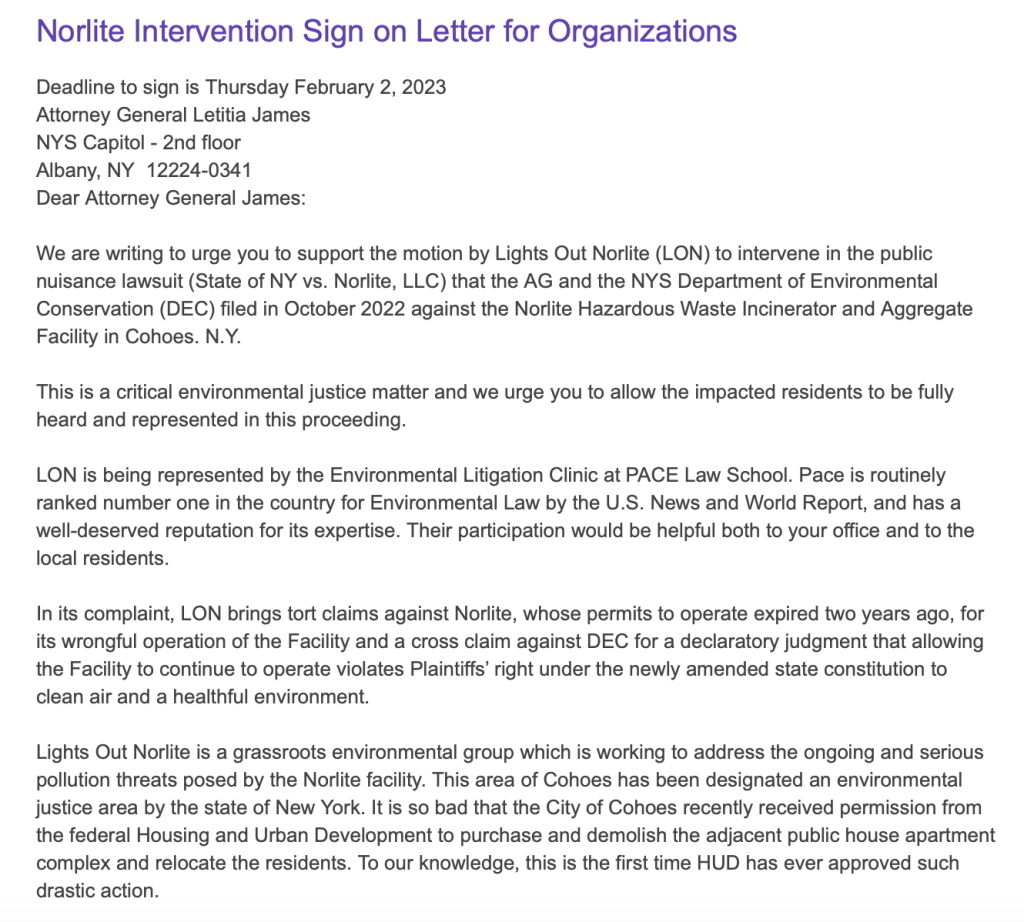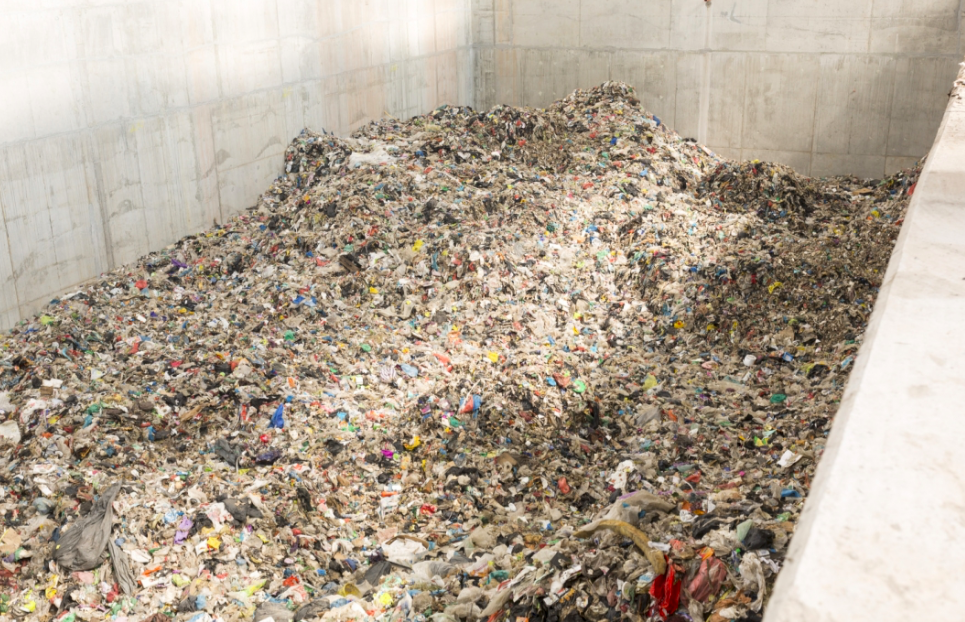
WHAT
Provide public comment during Ulster County Legislature meetings
WHERE
Ulster County Legislative Offices located at 244 Fair Street, 6th floor
WHEN
The next one is Tuesday, May 20 at 6:45pm. They meet third Tuesday of each month
WHY
Urge the Ulster County Legislature to focus on managing our waste locally and transparently. They must say no to polluting incineration or so-called “waste to energy” projects that are toxic, polluting and false solutions. The public deserves a clear, accessible roadmap that outlines the county’s plans, proposed policies, and legislation posted on a public-facing web page. These steps should be guided by the Zero Waste Hierarchy, prioritizing waste reduction, reuse, and responsible resource management.”
HOW
Sign-up to speak after 6:00pm on the 6th floor of the county building. Comments must be no more than 2-minutes in length (approximately 260 words)
__________________________________________________________
A collaborative post by KingstonCitizens.org and TownOfUlsterCitizens.org
New York State is known for its progressive environmental policies, but its waste management practices tell a different story. Every day, trash from cities like Kingston is hauled more than 500 miles round trip to Seneca Meadows, the state’s largest landfill, located in Seneca Falls, a small community of approximately 8,800 people. 1 These residents unfairly bear the burden of much of New York State’s waste – pollution, heavy truck traffic, foul odors, and long-term environmental degradation. With the landfill’s permit up for renewal, residents are calling for its closure by December 31, 2025, 2 and we fully support their demand.
Despite knowing for nearly a decade about the impending closure of Seneca Meadows, Ulster County still lacks a clear county-wide plan for responsibly managing its own waste.
Ulster County Resource Recovery Agency (“UCRRA”) currently sends 140,000 tons of Municipal Solid Waste (“MSW”) and Construction & Demolition (“C&D”) debris to the Seneca Meadows landfill in Seneca Falls, which is approximately 253 miles each way, averaging 12 trips a day, six days a week. 3
At the same time, several of our Ulster County Legislators think incineration and other so-called “waste-to-energy” projects are a solution to waste management, but incineration is just another harmful approach that exposes those living nearby to toxic pollutants like dioxins, mercury and other highly toxic metals, nitrogen oxides (triggers asthma attacks) and fine particulate matter that threaten public health and the environment. The process also generates toxic ash that is also being landfilled in a more concentrated, dangerous form. Incineration doesn’t solve our waste problem; it compounds it.
Furthermore, it is inefficient at producing energy. For instance, the trash incinerator in Peekskill (the largest in the Hudson Valley) produces only 1/10th as much electricity as the Cricket Valley gas-fired power plant. 4
“Trash incineration is the most expensive and polluting way to manage waste or to make energy,” said Mike Ewall, Executive Director of Energy Justice Network and one of our longstanding, key partners. “It is dirtier than landfilling and, as the state has documented, is more polluting than coal burning.”5
The disparity in New York’s environmental policies
The push for incineration and then the continued reliance on exporting our trash to landfills and incinerators in other counties and states reminds us of our fracking moratorium. In 2014, the state banned hydraulic fracturing (fracking) due to its environmental and health risks. However, we continue to import fracked gas from other states.
New York’s climate goals also expose another contradiction: the Champlain Hudson Power Express (CHPE) project. This hydropower initiative brings energy from Quebec to New York, but it comes at the cost of flooding rivers and disrupting ecosystems in Canada, displacing Indigenous communities in the process. 6
If we are serious about environmental justice, New York must stop neglecting the communities bearing the brunt of our waste. The state has a history of greenwashing – promising change while allowing harmful practices to persist. Real progress means addressing our waste locally, not shifting the burden onto others. And instead of relying on harmful waste management methods like incineration or exporting trash to landfills and incinerators in other counties and states, we must focus on reducing waste at its source through systemic change, and develop our own in-county, publicly-owned disposal capacity to handle our own waste responsibly. This includes mandating composting to divert organic material from landfills and incinerators, banning single-use plastics and excessive packaging, and holding manufacturers accountable for the waste their products generate. Public education is crucial, as people need to understand the environmental impact of their consumption and what they can do to reduce it. Waste management solutions should be localized, equitable, and designed to serve, not burden, communities.
In Ulster County, composting should be mandatory, just like wearing a seatbelt. Just as seatbelt laws protect public safety, mandatory composting is essential for reducing waste, cutting methane emissions, and conserving valuable resources. It’s an easy, effective way for everyone to contribute to responsible waste management because, like seatbelt laws, it’s about the collective good, not just individual choice.
Reducing waste instead of investing in polluting alternatives
In 2024, the Sullivan County Legislature began exploring the development of a so-called “Waste to Energy” plant in the county. In January, Ulster County Legislator Kevin Roberts persuaded Sullivan County to pass a resolution opposing a landfill in Wawarsing, suggesting that Ulster County might instead partner with Sullivan to bring a Covanta facility to the region. 7
In April, a bipartisan group of Ulster County legislators and guests toured Covanta’s incinerator in Westbury, Long Island – a troubling sign that outdated, polluting waste management strategies are still being considered. Since the tour, proponents have been actively circulating Covanta presentations and research in support of a regional so-called “waste to energy” facility. At the May meeting of the Energy and Environment Committee, committee members – including three legislators who participated in the tour – held an extended discussion on the potential benefits of bringing this polluting plant to the region. 8
Let’s be clear: incineration is not a solution. Studies have shown that incineration (and landfilling toxic ash) is 2-3 times more harmful for health and environment than going directly to landfills without burning first, and most of the landfill impacts can be reduced if we keep food scraps and yard waste out of them by composting. Instead of doubling down on harmful infrastructure, our leaders need to work with the public to develop systems that reflect the principles of the Zero Waste Hierarchy. This framework defines Zero Waste as the conservation of all resources by means of responsible production, consumption, reuse, and recovery of products, packaging, and materials without burning and with no discharges to land, water, or air that threaten the environment or human health. It offers a guide for real systemic change that prioritizes waste prevention and community well-being.
Ulster County already has a promising composting program, with plans in the works for its expansion. Our county legislators should focus on engaging the public to support the Ulster County Resource Recovery Agency in investing in this program, rather than touring incinerators. It’s a non-starter.
Take action.
The public must act now to shut down any discussions about polluting incineration or so-called “waste-to-energy” projects for our trash in Ulster County, whether proposed in our county or elsewhere. Although these talks are currently happening in committee and not yet on the full county legislature’s agenda, the public can still make its voice heard. Community members are encouraged to show up at legislative meetings and speak during the public comment period on this issue before harmful decisions are made in the background.
WHAT
Provide public comment during Ulster County Legislature meetings
WHERE
Ulster County Legislative Offices located at 244 Fair Street, 6th floor
WHEN
The next one is Tuesday, May 20 at 6:45pm. They meet third Tuesday of each month
WHY
Urge the Ulster County Legislature to focus on managing our waste locally and transparently. They must say no to incineration or so-called “waste to energy” projects that are toxic, polluting and false solutions. The public deserves a clear, accessible roadmap that outlines the county’s plans, proposed policies, and legislation posted on a public-facing web page. These steps should be guided by the Zero Waste Hierarchy, prioritizing waste reduction, reuse, and responsible resource management.”
HOW
Sign-up to speak after 6:00pm on the 6th floor of the county building. Comments must be no more than 2-minutes in length (approximately 260 words)
CITATIONS
(1) https://www.census.gov/quickfacts/fact/table/senecafallstownsenecacountynewyork/PST045224
(2) https://spectrumlocalnews.com/nys/central-ny/politics/2025/04/02/demonstrators-protest-seneca-falls-town-board-s-approval-of-landfill-operating-permit
(3) https://extapps.dec.ny.gov/fs/projects/SWMF/Annual%20Reports_Solid%20Waste%20Management%20Facility/Annual%20Reports_by%20Activity%20Type/Landfill/Landfill%20Annual%20Reports%20-%202023/R8/50S08_Seneca_Meadows_msw_R8_2023.2024-3-1.AR.pdf
(4) https://www.eia.gov/electricity/data/eia923/
(5) https://energyjustice.net/incineration/
(6) https://www.youtube.com/watch?v=efSb1H2Aq0I
(7) https://citizenportal.ai/articles/2144459/Sullivan-County/New-York/Ulster-County-leaders-urged-to-oppose-controversial-landfill-near-Sullivan-County-border
(8) https://www.youtube.com/watch?v=AmAKJyOriuI
ADDITIONAL RESOURCES
-
November 2, 2024: The City of Kingston’s composting program “rots”! (KingstonCitizens.org)
-
July 4, 2021: No Time to Waste: Zero Waste in Ulster County (KingstonCitizens.org)
-
June 27, 2020: KingstonCitizens.org Request UCRRA to Remove BioHiTech Facility in Local Solid Waste Plan for Ulster County (KingstonCitizens.org)
-
October 21, 2009: Why “Pay As You Throw?” (KingstonCitizens.org)
-
The leachate loophole (December 17, 2024)












